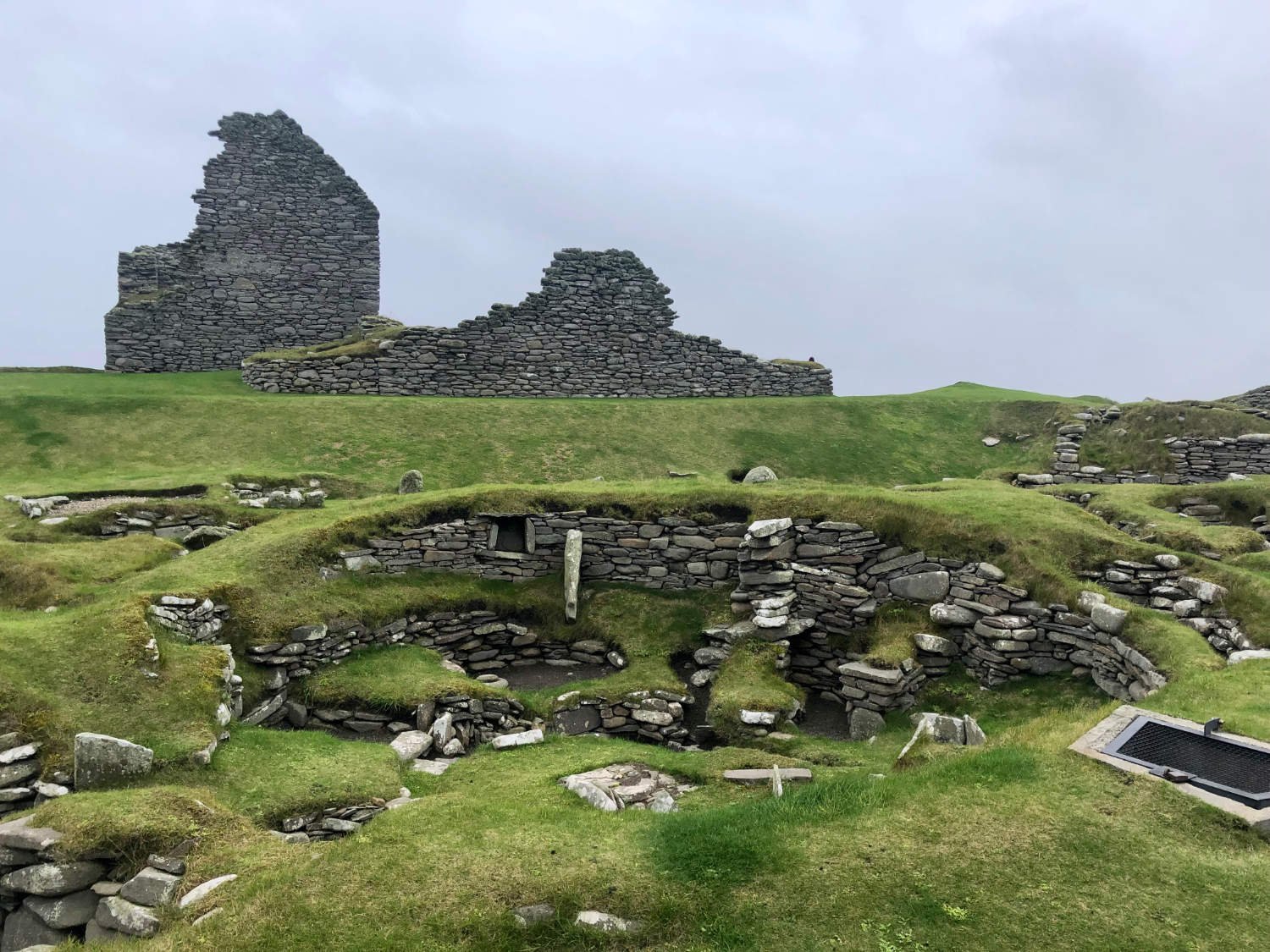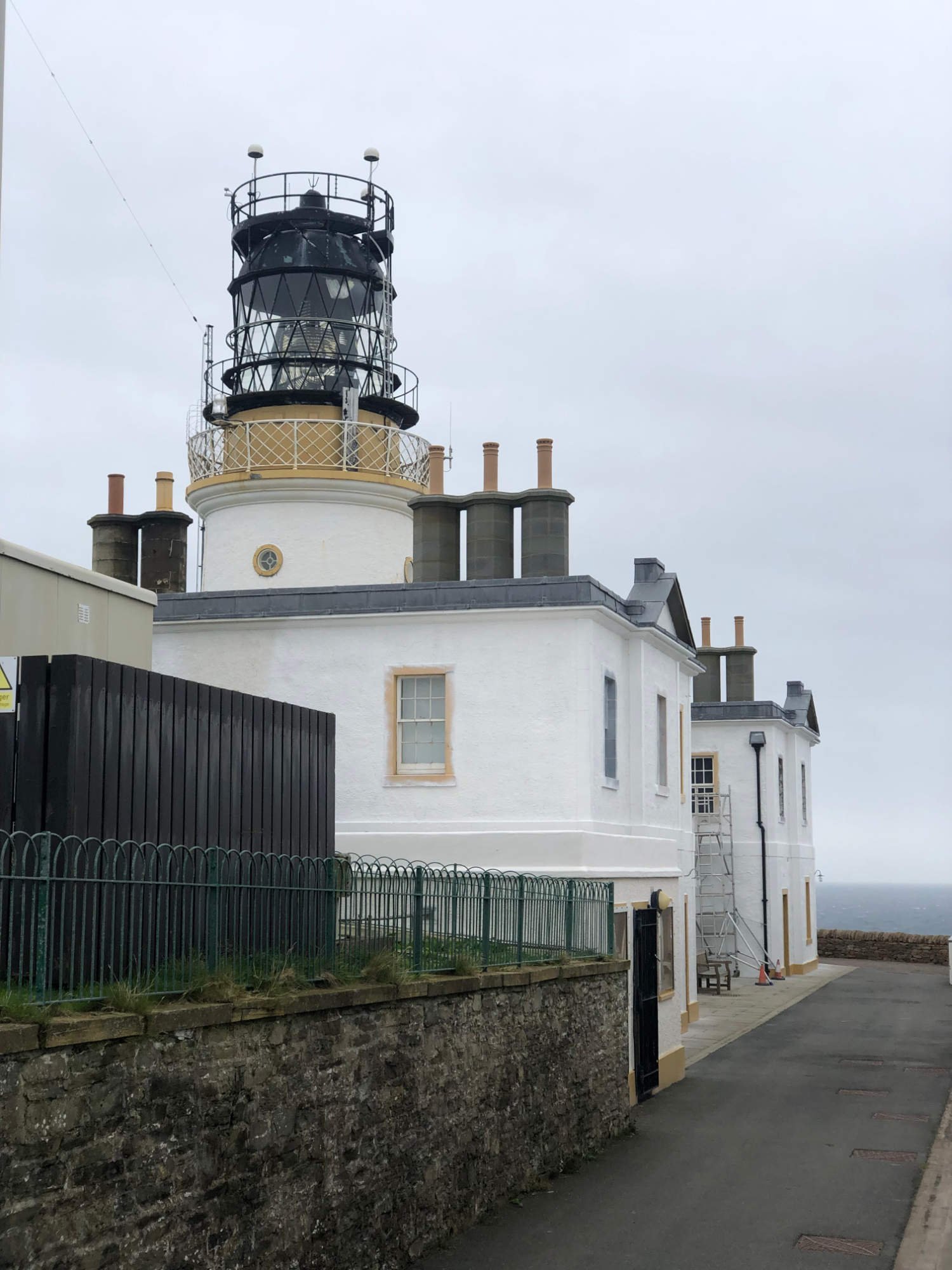North Sea Cycle Route - Skaw to Lerwick
The Baytof Scousburgh
Ride overview
Having finished the northward North Sea Cycle Route with your arrival at Skaw, you will now need to return back to Lerwick for the ferry or aeroplane. There is no other way other than hopping back onto your bike and riding back to the island capital. You could if pressed for time, just retrace your route back. However, there is a lovely alternative which hugs the west coast, travels down to the southernmost tip of the Mainland, before going north again to finish at Lerwick. As ever with the Sheltands, you will need to build in a day or two into your schedule, for the weather has a habit of becoming very frisky with Atlantic storms being a frequent occurence. Should the weather be lovely there are plenty of options to ride/rest up/sightsee along the route. What is beyond doubt, is the mesmerising beauty of Shetland which once seen in all its fearsome glory, will forever call you back.



















Ride practicalities
Using the mapping App for Shetland seems to send it into a spin. It has created Himalayan styled mountains to cross. Be assured, they do not exist. The route is gently rolling - and a total would unlikely exceed 1,000m for the entire length.
There is little signage on the route, other than the occasional North Sea Coast Cycle Route sign. That said, it’s pretty hard to lose your way.
START/FINISH: Skaw/Lerwick DISTANCE: 224km TOTAL ASCENT:1000m (est.) TERRAIN AND SURFACES: some busy roads around Lerwick and Sumburgh, otherwise it’s quiet single-track. Shetland hast the best road surfaces in UK RECOMMENDED CAFÈS/PUBS/ACCOMMODATION: The Baltasoud Hotel, Busta; Busta House Hotel, Sumbrugh; The old lighthouse NEARBY MAINLINE TRAIN SERVICES: There are no trains. Check ferry times here PLACES TO VISIT; Lerwick; Shetland Museum and Archive Haroldswick~The Skidbladner (Viking Ship), Sumburgh; Jarshof, Sumburgh Lighthouse, Dunrossness; Crofter’s Cottage Museum at Dunrossness LINKS TO OTHER RIDES: NSCR Orkney, NSCR stage 24, Shetland Island Tour
Ride notes
The return route to Lerwick is long and beautiful and cannot be done in a day, no matter how fit you are. The Ferry times will not permit it.
From Skaw, return to The Baltersound Hotel, where you’ll spend the night (unless you’re camping). There’s no other choice. Then it’s back across the heather moors of Unst, to the ferry and across to Gutcher and the island of Yell. At Mid-Yell, you turn down the west coast to West Sandwich and Clothan. It’s now familiarly wild, coastal, and windy. Sheep and Shetland ponies will keep you company; they tend to look up from their grazing as you ride past their field. The road gently rises and falls. It’s a diverse landscape and the road passes over blanket bogs, heathland and rock. The sea is rarely out of view. Even the keenest botanist is unlikely to see some of the rare Arctic-Alpine plants that call the Shetlands their home; so suffice it to know that several species of Arctic-Alpine plants are only found on the Shetland Isles and nowhere else in the world. Edmondston's Chickweed is one such plant.
A London bus 1600 miles from London
Having taken the ferry from Flukes Hole back to the Mainland, you ride past Sullom Voe Oil Terminal. The complex recieved its first drops of North Sea Oil via a pipeline on 25 November 1978 and it has been processing and shipping North Sea Oil ever since. Much of the ‘black gold’ is exported in tankers, which must keep their engines running whilst they are docked so that they are in a state of readiness at all times for vacating the Terminal should they need to at short notice. At its height of production in the late 1990s and early 200s, the terminal was handling almost 8 billion barrels (abt 1.1 billion metric tons) a year. Riding past the huge tanks linked by a maze of pipes is a weird experience, for here is one of the key industrial places in the whole of the British Isles, yet nothing seems to be happening; there’s no noise, no great too-ing and fro-ing, no great jets of steam nor smoke, an absence of trucks. Instead, there’s a silent collection of grey-white tanks linked by a maze of pipes. surrounded by sea and moor.
Near Sullom Voe
Continuing south, the route follows the deep inlet of Sullom Voe past the small settlement of Graven, which was a base for RAF flying boats which patrolled the North Atlantic in search of German U-Boats. Brae, the village at the head of the Voe has a hotel which caters for the oil workers and notably in these very dry islands, it has a bar. There are a succession of Voes or inlets, caused by endless (geologically speaking) continental collisions and crashing seas. The Shetlands enjoy a bit of global travel; over several hundreds of millions of years they’ve moved from near the South Pole to where they are today.
You ride through various small settlements including Voe and Aith and Bixter before arriving at Veensgarth where you’ll either take the main road directly to Lerwick, or follow the route south on the quieter B9074 to Scalloway and then cut across the narrow peninsula of land to arrive on the A970. The next five miles can be quite busy traffic-wise, but speed limits are strictly enforced and we found that vehicles were patient and gave us plenty of room as they overtook.
Spectacular Shetland Coastline
Take a minor road signed for the splendidly named Fladdabister. The road twists like a pretzel through gorgeous coastal scenery of bays, stacks, skerries to the Taing of Helliness. After Leebitten, there’s another short section of main road before turning off to Williamsetter and Scousburgh, where there’s a community shop.
Jarlshof
The route heads further south to Sumburgh, where there’s an airport and one of the great treasures of northern Europe; Jarlshof. For more than 4,000 years, humans have lived on this site. Neolithic people first settled here around 2700 BC, and it remained in use until the AD 1600s, making it one of the longest inhabited places on earth. As you can imagine, there is a rich array of different architectural styles ranging from the Bronze Age oval houses clustered together like penguins in an Antarctic storm, through to an Iron Age broch, a Viking longhouse and medieval fortified manor house. With the sea shushing on the nearby sandy cove, the wind tugging at the grass and the sheer depth of history lying all around you, Jarlshof is one of the most remarkable places on the entire North Sea Cycle Route.
Sumburgh Light
The road finally runs out at Sumburgh Head, where there’s a lighthouse designed by Robert Stevenson, one of many generations of Stevensons to design lighthouses, and grandfather to author Robert Louis. The views, and atmosphere at Sumburgh Head can vary from hour to hour. Storms and sunlight mix in a heady concoction of North Sea antics. An option is to stay in the old lighthouse keeper’s cottage. With Jarlshof, the Light and the ride from the north of the Mainland, Sumburgh is a good place to stop for the night before the final leg back up to Lerwick. If you are flying back home, then Sumburgh really is the end of your ride. If you are ferrying it back to Aberdeen, you’ll need to retrace your tyre tracks back to Lerwick. Avoid the temptation to follow the main road since it can be busy with airport traffic taking oil executives, technicians, wind-farm operatives, and tourists to various points on the islands.
The ride back will be as different in light and weather as it could possibly be. If you road down through an Atlantic tempest, you may well return in glorious sunshine with the sea as smooth as the proverbial millpond. You might choose to stop at the Crofter’s Cottage Museum at Dunrossness, with its lovely garden and atmospheric interior; dark and very basic with the smell of a peat fire in the grate.
Lerwick is where this great ride ends and you may well feel the mix of sadness and relief that this great ride of over 2,700 miles is finally over. As we sailed out into the North Sea on the NorthLink ferry, a fog descended like a curtain over the islands. The great show that is the Shetland Isles was over.
Every route on this website has been carefully researched as well as ridden. However situations on the ground can change quickly. If you know of changes to this route, or cafes, pubs and the like which you think other cyclists need to know about, feel free to share your thoughts below.
If you enjoyed this guide, why not subscribe to the website so as not to miss other inspirational routes?
wheremywheelsgo.uk is a Feedspot UK Cycling top website






